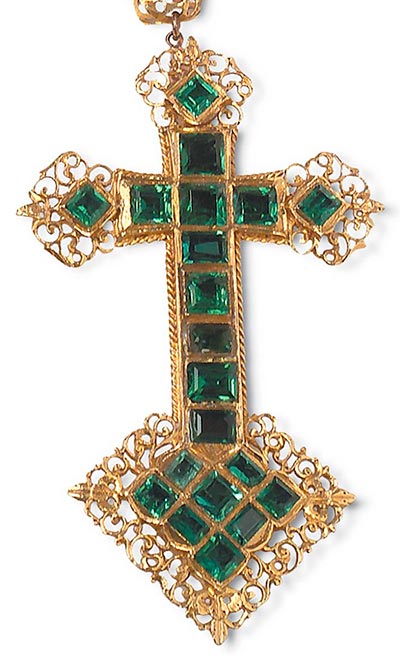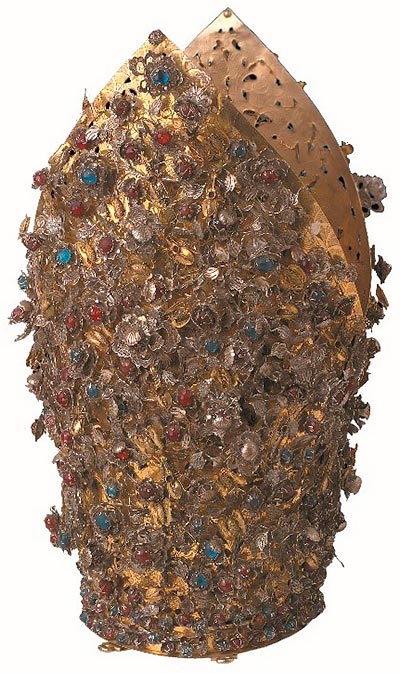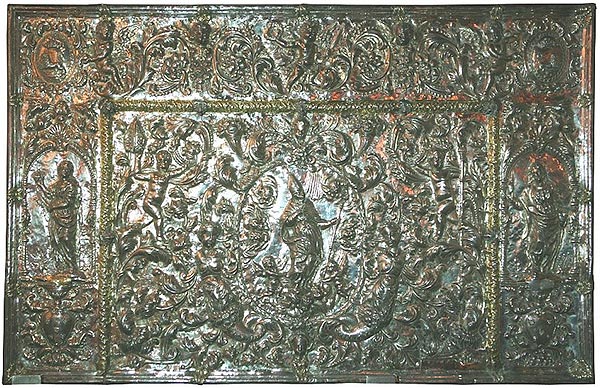June 25 and July 2
Visits to the Treasury of San Fermin
Ignacio Miguéliz Valcarlos
Chair of Navarrese Heritage and Art
The visits to the so-called "Treasure of San Fermín" bring the public of Pamplona closer to a set of artistic works that is partly unknown to most of the citizens: the liturgical trousseau accumulated over the centuries by Saint Fermín and kept in his chapel, located in the church of San Lorenzo. Although what is preserved today is only a part of the trousseau that the Saint gathered over the centuries, it is a patrimonial ensemble of great interest for the history it treasures and for the pieces it preserves. The works are dated between the XVI century and the XX century, although the most original and sumptuous are all from the centuries of the Baroque.
Within these works, three different origins can be distinguished: on the one hand, those commissioned by the chapel's workmen to adorn the Saint; on the other hand, those given by the Pamplona City Hall as patron of the chapel; and finally, those given by the devotees of San Fermín. The latter are precisely the most sumptuous and original works, most of which came from outside Pamplona and Navarre, and which constitute unique pieces not only for the richness of their invoice, but above all for the originality of their typologies, of which there are hardly any similar examples preserved in other places.
Among these works is the set sent in 1730 by Don José de Armendáriz y Perurena, Marquis of Castellfuerte, Viceroy of Peru, and whose palace in Pamplona was located next to the chapel of the Saint, where today is located the former convent of the Salesas, now the headquarters of the Pamplona Water Association. The viceroy's gift consisted of pieces of silverware for use in the chapel, such as five large trays and two jugs, which display the heraldic arms of the Castellfuerte family in the center of the decorative composition, and works of gold and silverware for use staff of San Fermín: a gold chain and an emerald pectoral.

Gold and emerald pectoral. Viceroyalty of Peru. Gift of José de Armendáriz, Marquis of Castellfuerte. 1730.
These are not the only jewels that the Saint preserves, since another gold chain, given by the Pamplona merchant Nicolás de Urtasun in 1757, but made in Canton (China), and a gold ring with a large emerald, sent from Popayán (Ecuador), by Juan Antonio de Zelaya in 1775, have also come down to our days. A work of special singularity, halfway between the concept of silverware and jewelry, is the silver filigree crosier and mitre adorned with tembleques, representing flowers and insects, from a Cantonese workshop, given by Felipe de Iriarte in 1764, and that together with the previous jewels the Saint wears in his main festivities.

Mitra. Canton (China). Gift of Felipe de Iriarte. 1764.
Richer and more varied is the group of works of silverware in which, along with the pieces already mentioned, the two altar frontals stand out, the only ones of their kind in Navarre, made between 1725 and 1733, one of them by the Pamplona silversmith Juan Antonio Hernández. These works, like all those commissioned by the Pamplona City Hall, show in a visible way the heraldic arms of the City Hall, the passing lion crowned by a crown and bordered by chains, as well as the emblem of the five wounds. They are also displayed on two lecterns made in 1725 or two sacred altarpieces carved in 1764 by Pedro Antonio de Sasa, in which they are accompanied by the arms of Navarre and by the busts of the patron saint of the city, Saint Saturnino, together with those of the kingdom, Saint Fermin and Saint Francis Xavier.

Credence. 1733. Pamplona. Juan Antonio Hernández.
Thus, in the treasure or trousseau of San Fermín one can admire a rich patrimonial ensemble, unique in its genre, which testifies to the devotion that the people of Pamplona and Navarre felt and feel for the Saint, the reason for the offerings they made to him.
